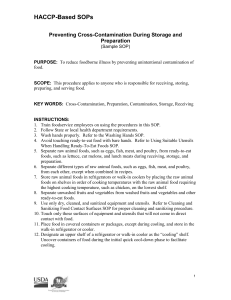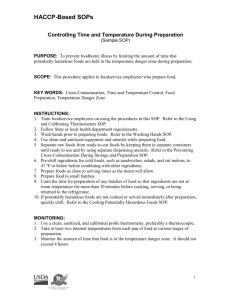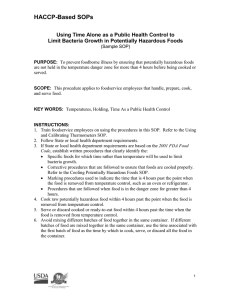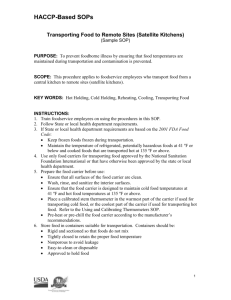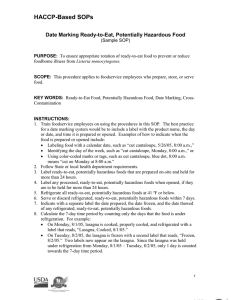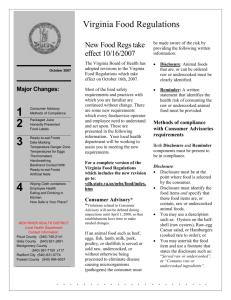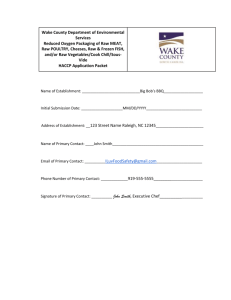Preventing Cross-Contamination During Storage and Preparation
advertisement
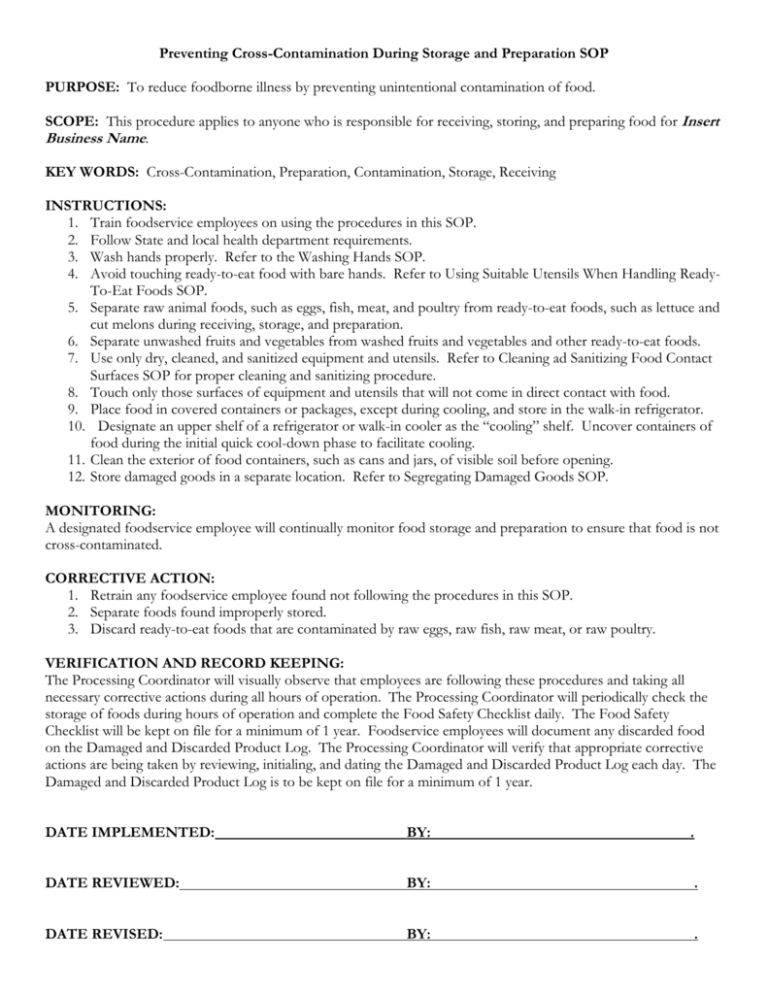
Preventing Cross-Contamination During Storage and Preparation SOP PURPOSE: To reduce foodborne illness by preventing unintentional contamination of food. SCOPE: This procedure applies to anyone who is responsible for receiving, storing, and preparing food for Insert Business Name. KEY WORDS: Cross-Contamination, Preparation, Contamination, Storage, Receiving INSTRUCTIONS: 1. Train foodservice employees on using the procedures in this SOP. 2. Follow State and local health department requirements. 3. Wash hands properly. Refer to the Washing Hands SOP. 4. Avoid touching ready-to-eat food with bare hands. Refer to Using Suitable Utensils When Handling ReadyTo-Eat Foods SOP. 5. Separate raw animal foods, such as eggs, fish, meat, and poultry from ready-to-eat foods, such as lettuce and cut melons during receiving, storage, and preparation. 6. Separate unwashed fruits and vegetables from washed fruits and vegetables and other ready-to-eat foods. 7. Use only dry, cleaned, and sanitized equipment and utensils. Refer to Cleaning ad Sanitizing Food Contact Surfaces SOP for proper cleaning and sanitizing procedure. 8. Touch only those surfaces of equipment and utensils that will not come in direct contact with food. 9. Place food in covered containers or packages, except during cooling, and store in the walk-in refrigerator. 10. Designate an upper shelf of a refrigerator or walk-in cooler as the “cooling” shelf. Uncover containers of food during the initial quick cool-down phase to facilitate cooling. 11. Clean the exterior of food containers, such as cans and jars, of visible soil before opening. 12. Store damaged goods in a separate location. Refer to Segregating Damaged Goods SOP. MONITORING: A designated foodservice employee will continually monitor food storage and preparation to ensure that food is not cross-contaminated. CORRECTIVE ACTION: 1. Retrain any foodservice employee found not following the procedures in this SOP. 2. Separate foods found improperly stored. 3. Discard ready-to-eat foods that are contaminated by raw eggs, raw fish, raw meat, or raw poultry. VERIFICATION AND RECORD KEEPING: The Processing Coordinator will visually observe that employees are following these procedures and taking all necessary corrective actions during all hours of operation. The Processing Coordinator will periodically check the storage of foods during hours of operation and complete the Food Safety Checklist daily. The Food Safety Checklist will be kept on file for a minimum of 1 year. Foodservice employees will document any discarded food on the Damaged and Discarded Product Log. The Processing Coordinator will verify that appropriate corrective actions are being taken by reviewing, initialing, and dating the Damaged and Discarded Product Log each day. The Damaged and Discarded Product Log is to be kept on file for a minimum of 1 year. DATE IMPLEMENTED: BY: . DATE REVIEWED: BY: . DATE REVISED: BY: .
